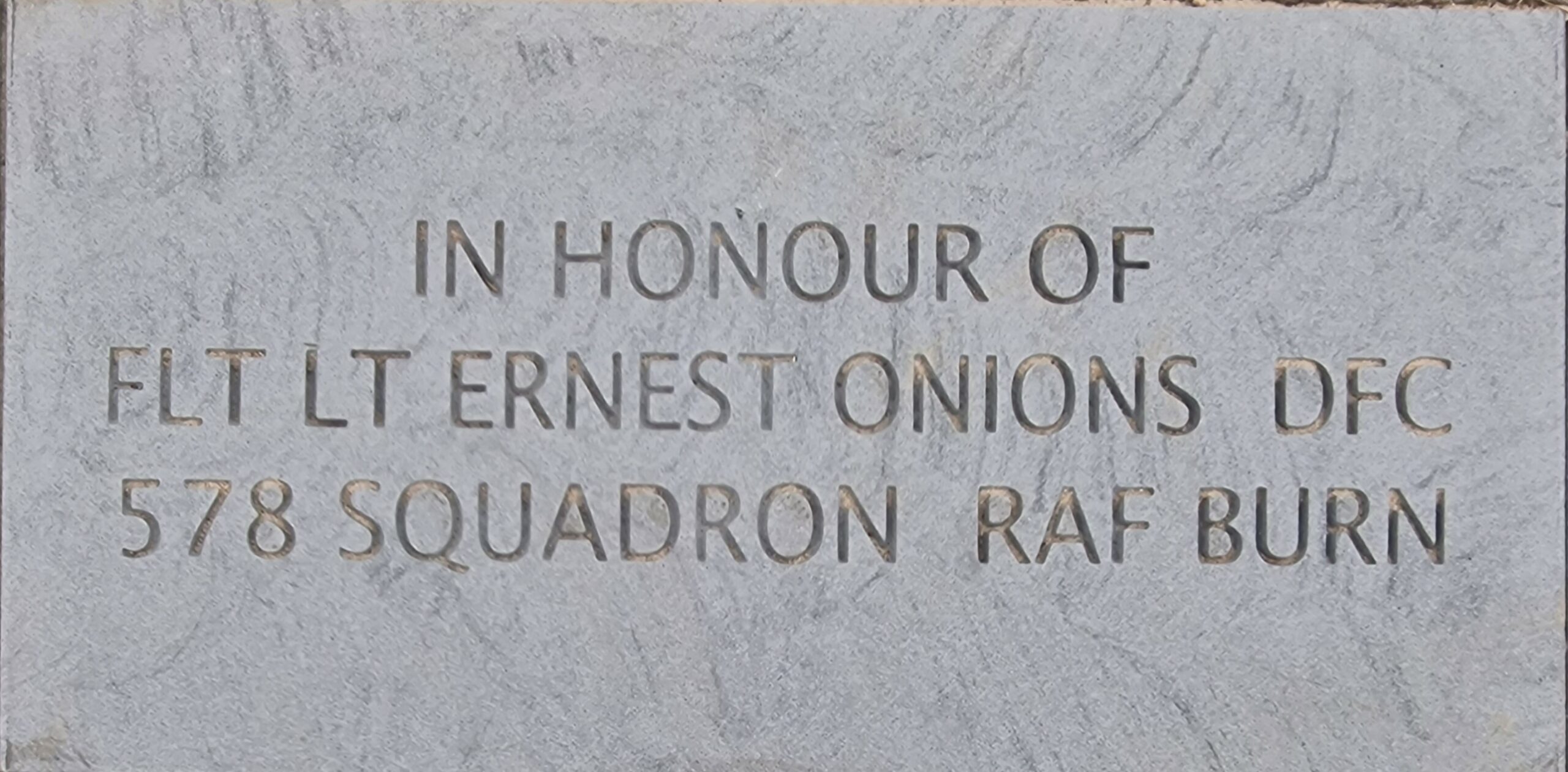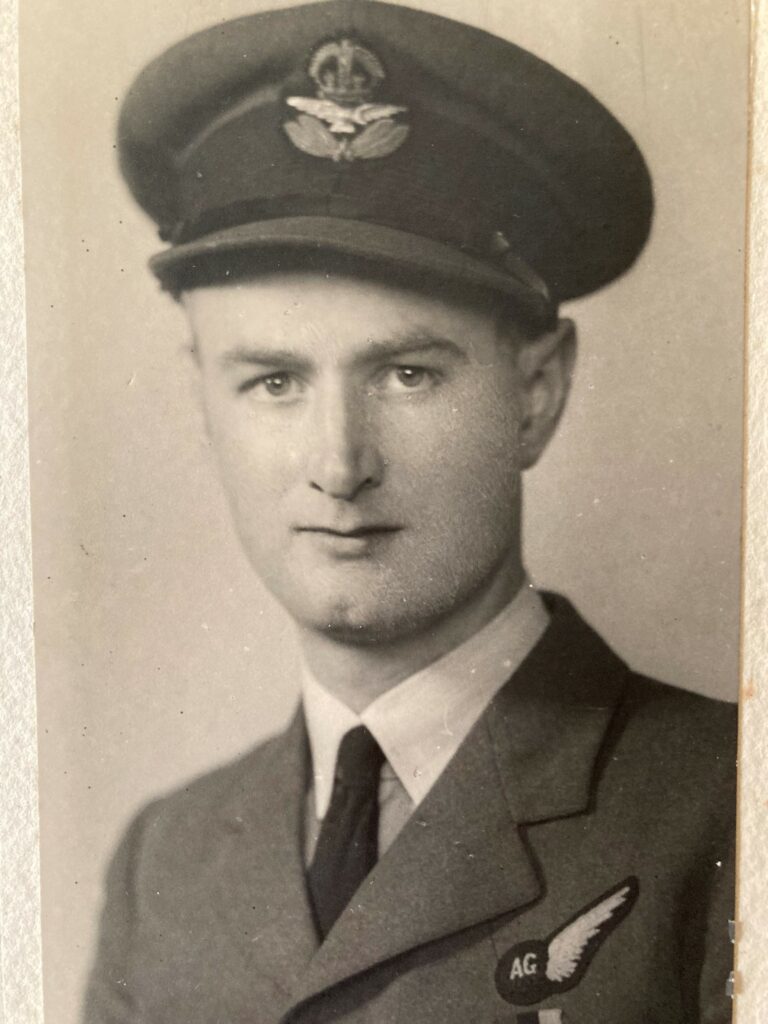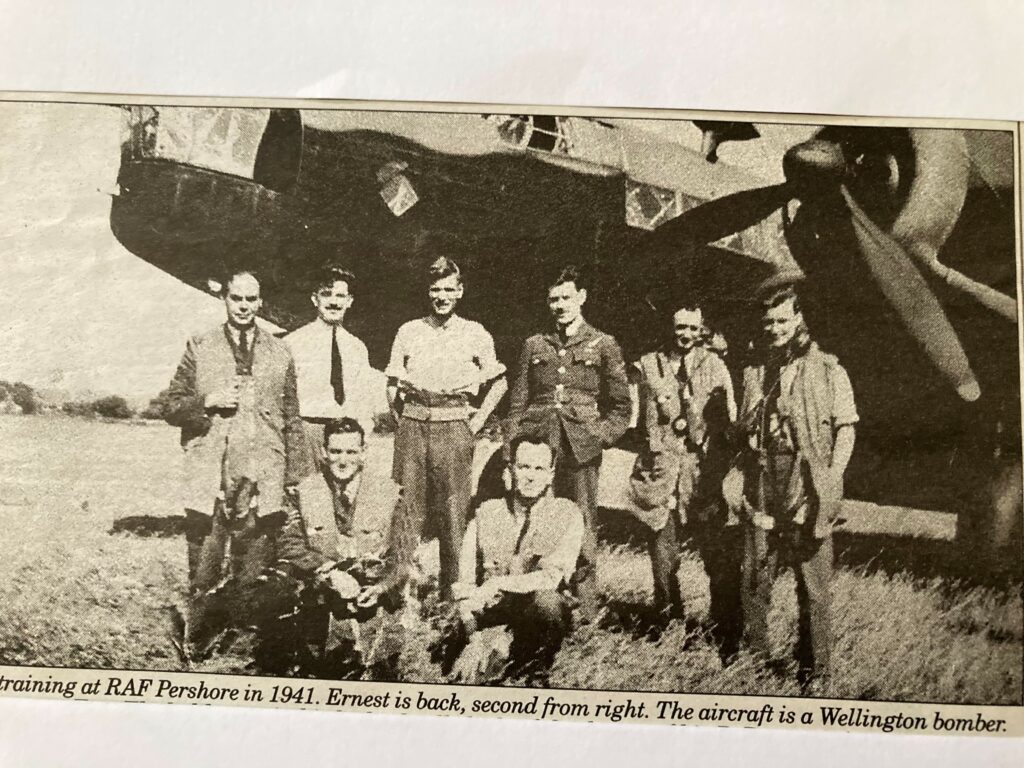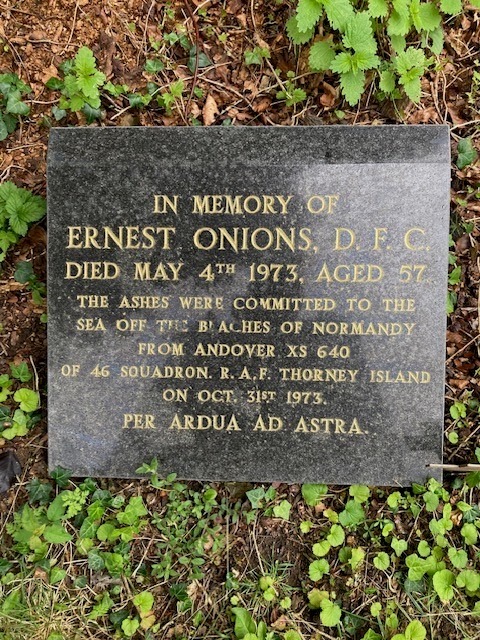
Flight Lieutenant Ernest Onions DFC – 1915-1972

A BRAVE SHROPSHIRE AIRMAN
Ernest Onions was born on 19 December 1915 at The Ferry, a farm in Shrawardine, Shropshire. He was the ninth child and fifth son of William and Susan Onions. He attended Oxon CE School and Oxon CE Church. Ernest left school aged fourteen and completed a five-year apprenticeship in carpentry. He later worked for London Midland and Scottish Railway in Shrewsbury as a joiner.
Ernest married his childhood sweetheart, Edith Margaret (Peggy) Evans in 1940 and together they had four children, John, Susan, Robin and Rosalyn.
In 1940 when walking through Shrewsbury Ernest passed a recruitment office by chance and enlisted in the RAF. He began his training with Bomber Command at RAF Yatesbury, then RAF Pershore. The photograph below shows Ernest, back row, second from right standing in front of a Wellington Bomber. His nickname was ‘Spring’.

Ernest qualified as an Air Gunner and a Wireless Operator. He joined 9 Squadron and began active duty on 9 August 1941 with an operation to Hamm, the first of 50 operations he was to complete. He was fortunate to survive his first tour as he was involved in 2 serious crashes. In October 1941 following an operation to Rotterdam and later in February 1942 his plane crashed in Clacton during training and only he and the second pilot survived.
In 1944 Ernest joined the new 578 Squadron and was stationed at RAF Burn flying Halifax Bombers. On the night before D Day Onions was one of seven crew of Halifax Mark III MZ513. Led by Squadron Leader W. G. Watson DFC with an experienced crew, all on their second tour of operations. They took off at 2.31am for Mont Fleury and dropped their bombs on the markers at 4.37am. As they were leaving the bombing area the plane was hit, probably by flak and badly damaged, the mid upper gunner was wounded. Watson gave the order to bale out, the Navigator was first to go, followed by the Air Bomber.
Ernest Onions remained at his post sending out distress signals until the pilot again instructed all crew to bale out saying “I can’t hold it much longer.”
Onions hit his head leaving the aircraft and remembered seeing the sea and hitting the water. He was unable to rid himself of his parachute. He was towed along under and above the surface and became unconscious. He woke up on an American minesweeper, and was told he had been travelling through the water at 8 knots and the ship could only do 10 knots! Flying Officer Onions, Flying Officer Heffernan and Flight Sergeant Middleton
survived.
Squadron Leader Watson DFC, Flying Officer Hall DFC, Flight Sergeant Goode and Flying Officer Turner died.
There were sightings of Halifax MZ513 as it crashed into the sea.
Corporal Victor Jones, RAMC, a witness said “The plane dropped down between our ship and the one next to us, obviously avoiding us, to crash into the sea behind. I can still see the rear gunner looking at us but no one survived the crash, that is my most poignant memory of D Day”.
Lieutenant General Omar Bradley, commanding the US First Army, was aboard the USS Augusta off the coast of Normandy at the time and his diary records the loss of Ernest’s plane. ‘the stricken bomber plunged towards the Augusta. It levelled off, banked around our stern and exploded into the channel.’
Ernest’s wife received the telegram all families dread. It read ‘Deeply regret to inform you that your husband Flying Officer Ernest Onions failed to return from an operational flight this morning. Letter following.’
It was two days later when Peggy heard her husband was alive and well. Ernest Onions was awarded the DFC for his actions that night.
After the war he set up as a builder and contractor. He served his community as a Parish and as a County Councillor and enjoyed gardening and holidays in Europe. Ernest’s final years were dogged by ill health, he died in May 1972 as he lived, a brave man.
Ernest never forgot the lost crew of Halifax MZ513 and requested his ashes be scattered at the site where the aircraft and crew perished in 1944. The RAF honoured him in death as in life. His ashes were committed to the sea off the coast of Normandy from an Andover of 46 Squadron, RAF Thorney Island on 3rd. October 1973
PER ARDUA AD ASTRA
